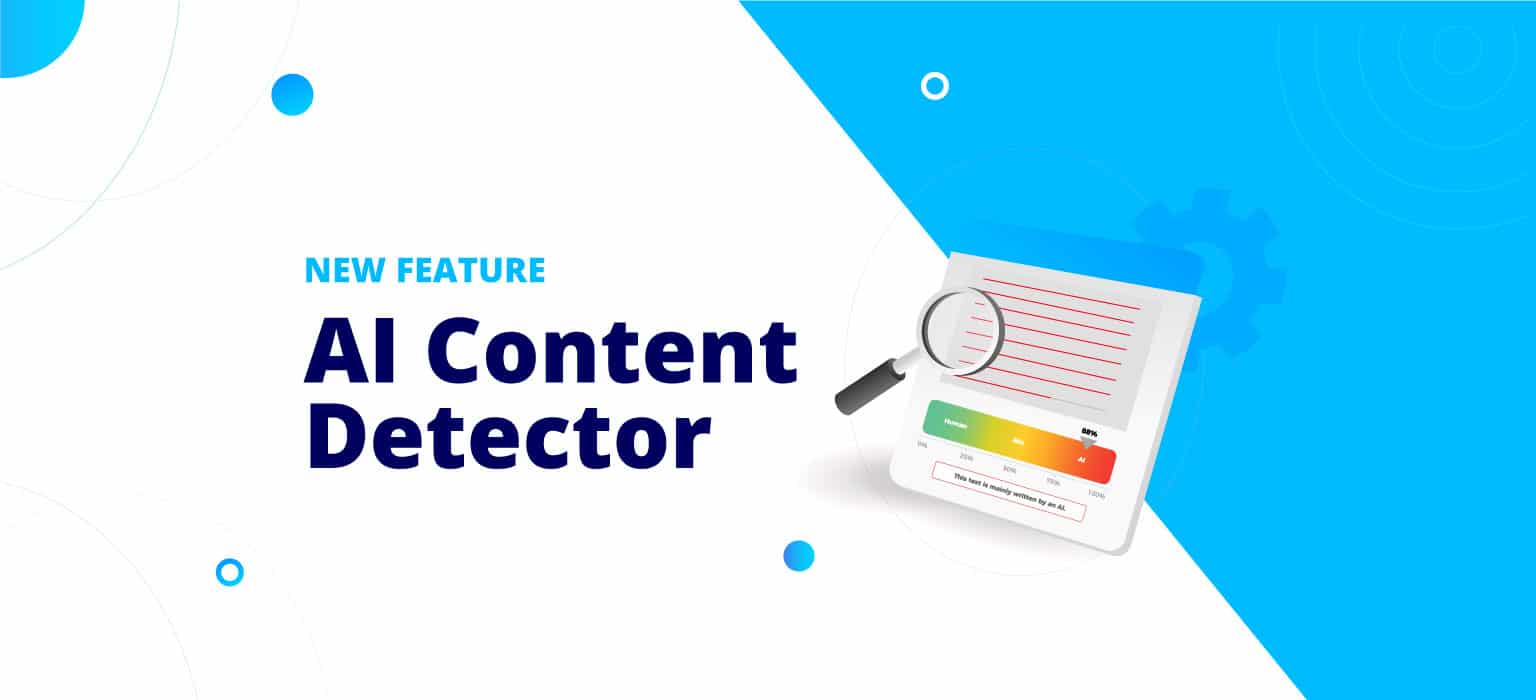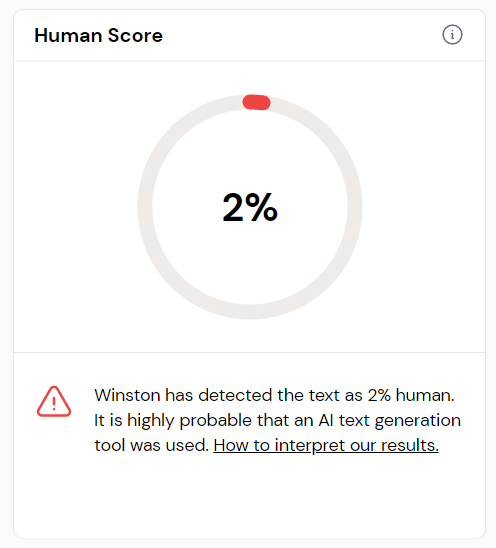AI Detector: The Key to Safeguarding Your Content from AI Manipulation
AI Detector: The Key to Safeguarding Your Content from AI Manipulation
Blog Article
Recognizing the Relevance of an Ai Detector in Today's Digital Landscape
As fabricated knowledge continues to permeate various elements of web content production, comparing machine-generated and human-generated material has actually ended up being significantly intricate. This progressing landscape provides substantial challenges connected to authenticity and credibility, demanding the advancement of AI discovery tools. These instruments not just aid in determining AI-produced web content yet also copyright the honesty of information dissemination. Comprehending their function becomes important as we browse a future where the integrity of media is under consistent scrutiny. What effects might this have for makers and customers alike?
The Surge of AI Material

The rise of AI-generated material has substantial implications for various markets, including advertising and marketing, entertainment, and journalism - ai detector. Organizations are significantly using these innovations to improve efficiency, customize content, and engage audiences much more successfully. The ability to analyze huge datasets enables AI systems to tailor material to fulfill particular user choices, supplying a much more personalized experience
Nevertheless, the spreading of AI material also increases important considerations for material designers and customers alike. As AI ends up being a lot more incorporated into content manufacturing workflows, understanding the nuances of AI-generated product is necessary for preserving high quality and importance in a rapidly advancing digital atmosphere. Embracing this technical advancement while staying cautious concerning its effects is essential for stakeholders in the digital media landscape.
Challenges of Authenticity
The development of AI-generated content has actually introduced significant challenges pertaining to authenticity in digital media. As algorithms end up being more innovative, identifying between human-created and machine-generated content becomes increasingly challenging. This obscuring of lines increases concerns regarding the integrity of details and the capacity for false information to proliferate.
One of the primary difficulties is the erosion of count on amongst customers. With AI with the ability of producing sensible text, photos, and video clips, individuals might locate it testing to discern authentic sources from misleading ones. This suspicion can bring about a broader skepticism of all electronic web content, making complex initiatives to identify trustworthy details.
Additionally, the implications for copyright are significant. As AI tools produce content based on existing works, concerns pertaining to possession and originality arise. Material creators might battle to safeguard their job from anonymous AI recreations, weakening their livelihoods and legal rights.
Lastly, the possibility for harmful usages of AI-generated web content, such as deepfakes and automated propaganda, postures severe honest and societal risks. These challenges emphasize the immediate need for frameworks that support credibility in the electronic landscape, ensuring that information remains trustworthy and reputable.
Duty of AI Detectors
Attending to the difficulties of credibility in digital media calls for ingenious services, and AI detectors have emerged as a critical device in this initiative. These modern technologies are created to examine and recognize material generated by expert system, thus assisting in the discernment in between human-created and machine-generated materials. The duty of AI detectors extends beyond plain recognition; they also contribute to preserving the honesty of information taken in by the public.
AI detectors use sophisticated algorithms to inspect various components of digital material, including etymological patterns, structural abnormalities, and details markers that indicate automation. Their application covers numerous fields, consisting of journalism, education and learning, and social media sites, where the presence of AI-generated content can cause false information and erosion of count on.

Benefits of Using AI Detectors
Guaranteeing authenticity in electronic content symbolizes the basic requirement for count on in info sources, and AI detectors work as an effective ally in this search. By determining site AI-generated content, these devices assist keep the stability of information, thus securing customers from misinformation and enhancing overall material top quality.
One of the key advantages of utilizing AI detectors is their capability to streamline material confirmation procedures, substantially decreasing the time and effort required to evaluate the credibility of digital products. This effectiveness enables content developers, educators, and companies to concentrate on creating high-quality and dependable info, instead of investing too much resources on fact-checking.
Moreover, AI detectors foster responsibility among content makers. The expertise that AI-generated web content can be identified urges openness and honest methods in material manufacturing. This, subsequently, adds to a much more educated digital neighborhood, as customers can with confidence involve with validated details.
Future of Material Verification
As the landscape of digital content continues to evolve, the future of web content verification presents both challenges and possibilities for preserving credibility. As AI modern technologies advance, so as well do the methods for producing and sharing misinformation (ai detector). This arms race between content designers and confirmation tools requires the advancement of more advanced AI detectors with the ability of discerning real content from controlled or produced product

Additionally, the rise of decentralized modern technologies, such as blockchain, holds guarantee for validating content provenance, making sure that users can map the beginnings of the details they eat. Ultimately, the future of content verification will pivot on our capacity to innovate despite progressing hazards, cultivating an electronic environment where credibility is identified and promoted as a fundamental principle.
Conclusion
In verdict, the proliferation of AI-generated content demands robust systems for authenticity verification. The future of web content confirmation hinges on the efficiency of AI detectors in keeping credibility across numerous media systems.
AI content production tools, such as all-natural language handling designs and generative adversarial networks, make it possible for people and companies to produce premium material at unmatched speeds and lower prices.
However, the spreading of AI content also elevates essential factors to consider for material designers and consumers alike. As the class of AI-generated material continues to advance, linked here the role of AI detectors ends up being increasingly vital in securing credibility and promoting transparency in digital communication. The understanding that AI-generated material can be determined urges openness and ethical methods in web content production.As the landscape of digital content continues to develop, the future of additional reading material verification challenges both presents and opportunities for keeping authenticity.
Report this page